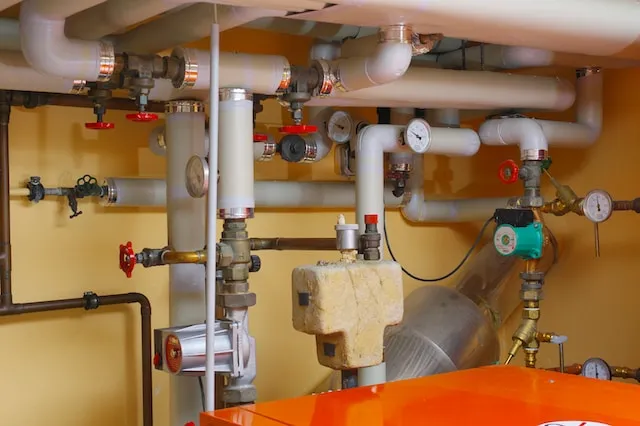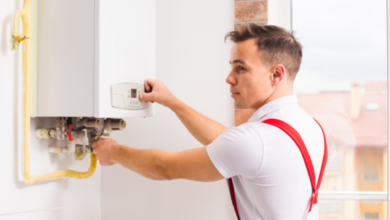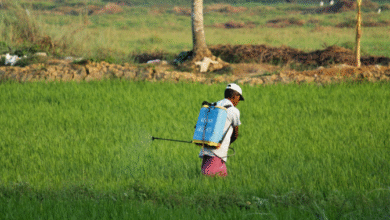The Flow of Functionality: Understanding Modern Plumbing Systems

Introduction
Every modern building, whether residential, commercial, or industrial, depends on one essential system to maintain hygiene, comfort, and efficiency: plumbing. The systems behind our access to clean water and waste removal are vast, complex, and critical to public health and convenience. Yet, despite how vital plumbing is, the infrastructure and expertise behind it often go unnoticed—until something goes wrong.
This article explores the core principles, innovations, responsibilities, and future of plumbing systems, including how they are designed, maintained, and evolved over time. Whether you’re a homeowner, a property manager, or simply curious about the infrastructure hidden within your walls, this comprehensive guide will provide clarity.
The Fundamentals of Plumbing
Plumbing is far more than just a network of pipes. It is an intricate integration of fixtures, valves, tanks, and appliances all working in unison to manage two key functions: the supply of potable water and the removal of wastewater. At its core, the purpose of plumbing is to create a clean, safe, and functional environment for water-related needs in all types of buildings.
This begins with fresh water entering a property through a main water line, where it’s distributed to sinks, showers, toilets, and appliances. Simultaneously, wastewater and sewage are carried away through a separate network of drainpipes and vents, eventually reaching public sewers or septic systems.
A well-maintained plumbing system ensures water is available at the right pressure, temperature, and purity. It also prevents contamination through backflow or leaks, which can lead to serious health risks and structural damage.
Types of Plumbing Systems
Understanding different plumbing systems helps to appreciate their importance and function in daily life. Most buildings include the following types:
- Water Supply System: This brings clean water from a municipal source or well into the building.
- Drainage System: Wastewater is carried away through a system of pipes, vents, and traps.
- Vent System: Vents regulate air pressure in pipes, allowing wastewater to flow smoothly.
- Stormwater System: In certain buildings, separate drainage systems are installed to manage rainwater and prevent flooding.
- Gas Piping System: Though not always considered part of plumbing, gas lines for stoves, heaters, and fireplaces often fall under the responsibility of plumbing professionals.
Each system must be properly installed and maintained to comply with safety codes and health standards. If any part of the system fails, the entire function can be compromised, requiring immediate inspection or repair.
Tools and Techniques of the Trade
Behind every successful installation or repair is a toolbox filled with specialized equipment. From basic wrenches and pliers to digital leak detectors and hydro-jetting machines, tools have evolved alongside plumbing technology.
Some of the most commonly used tools in modern plumbing include:
- Pipe Cutters and Saws: For cutting through PVC, copper, or steel piping with precision.
- Threading Machines: Used to add threads to the ends of metal pipes for fittings.
- Inspection Cameras: Small, waterproof cameras that snake through drains to locate clogs or damage.
- Hydro-Jetters: High-pressure hoses that remove stubborn blockages in sewer lines.
- Soldering Tools: Essential for connecting copper pipes through heat fusion.
These tools allow for more accurate diagnostics and less invasive repairs, minimizing disruption for property owners. The advancement in equipment has also contributed to a reduction in labor time and long-term costs.
Installation vs. Maintenance
Installing plumbing in a new building is a different challenge compared to maintaining an existing system. During installation, the layout is designed in coordination with architects and engineers, ensuring the piping meets pressure requirements, usage expectations, and legal codes.
Maintenance, on the other hand, involves routine inspections, cleaning, and part replacements. Neglecting maintenance can lead to small issues snowballing into expensive problems—like mold growth, structural damage, or water waste due to unnoticed leaks.
Preventive maintenance tasks include:
- Checking for corrosion or rust on pipes.
- Flushing water heaters to remove sediment.
- Inspecting drains and traps for clogs.
- Testing water pressure and shut-off valves.
- Replacing old washers and gaskets to avoid leaks.
Timely maintenance not only extends the life of the system but also ensures water efficiency and consistent functionality.
Common Problems and Solutions
Even the most well-built systems experience issues. Some of the most frequent plumbing problems include:
- Leaky Faucets or Pipes: Often caused by worn-out seals or washers.
- Clogged Drains: Due to the buildup of hair, grease, or foreign objects.
- Low Water Pressure: Could be a result of pipe corrosion, leaks, or faulty valves.
- Running Toilets: A malfunctioning flapper or valve can waste gallons of water daily.
- Water Heater Failures: Sediment buildup or faulty thermostats are common culprits.
While some issues can be resolved with basic DIY knowledge, complex problems should always be addressed by a qualified professional. A trained expert not only fixes the issue but also identifies its root cause to prevent recurrence.
This is why it’s essential to rely on a certified plumber—someone with the experience, training, and tools necessary to restore systems efficiently and safely.
Plumbing and Sustainability
Environmental responsibility has become a central concern in all aspects of building design, and plumbing is no exception. With water scarcity affecting many regions, water conservation is more critical than ever.
Modern plumbing embraces sustainability through:
- Low-Flow Fixtures: Faucets, showerheads, and toilets that use significantly less water.
- Greywater Systems: Reusing water from showers and sinks for irrigation or flushing.
- Tankless Water Heaters: Providing hot water on demand without storing large volumes.
- Smart Leak Detectors: Monitoring water usage and alerting users of leaks in real-time.
These technologies not only reduce environmental impact but also lower utility costs, making them beneficial for both the planet and the wallet.
Health and Safety Regulations
Given its direct impact on health and sanitation, plumbing is heavily regulated. Codes and standards ensure that systems are safe, reliable, and built to withstand wear and environmental changes. These regulations vary by region but often cover areas such as:
- Pipe material and installation practices.
- Water heater safety and ventilation.
- Cross-connection control to prevent contamination.
- Backflow prevention devices.
- Proper drainage slope and venting.
A licensed plumber is trained to understand and follow these codes, ensuring compliance and safety for property owners. Working with unlicensed individuals can lead to legal consequences, fines, or worse—unsafe systems that pose health hazards.
The Digital Era of Plumbing
As with every trade, technology has revolutionized how services are delivered. Today’s plumbing professionals are incorporating digital tools to streamline operations and improve client communication. From mobile apps that schedule service calls to software that tracks maintenance history, the digital shift is evident.
Even diagnostic processes are increasingly automated. Sensors, Wi-Fi-connected water monitors, and smart valves can identify leaks, usage trends, and potential problems long before physical symptoms appear. These advancements allow property owners to act proactively rather than reactively.
For businesses, offering tech-driven services is a competitive advantage. Clients appreciate convenience, transparency, and fast response—all of which are enhanced through digital tools.
The Future of Plumbing
Looking ahead, plumbing will continue to evolve in response to new technologies, environmental demands, and changing lifestyles. Innovations like recycled water systems, biodegradable piping materials, and AI-assisted diagnostics will reshape the trade.
Education and training will also adapt, with digital simulations and virtual apprenticeships becoming part of standard practice. The rise of green building certifications like LEED and WELL means that professionals must also learn to integrate systems into broader environmental frameworks.
As expectations rise, so too will the standards for service, expertise, and sustainability. The future belongs to those who can innovate while preserving the timeless principles of good workmanship.
Conclusion
Plumbing may often be overlooked, but it is one of the most crucial systems in any building. It supports health, hygiene, convenience, and even environmental conservation. Whether you’re installing a new system, upgrading an old one, or addressing an urgent repair, the importance of doing it right cannot be overstated.
Choosing the right professional for the job—someone certified, experienced, and trustworthy—makes all the difference. A skilled plumber not only repairs what’s broken but preserves the comfort and safety of the spaces we live and work in.
In the end, the systems may be hidden, but their impact is anything but invisible. By understanding how plumbing works and staying proactive, we ensure that the water keeps flowing and life keeps moving forward—cleanly, efficiently, and sustainably.




